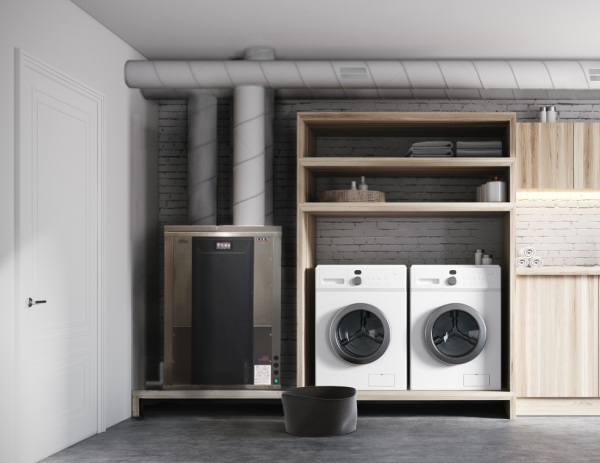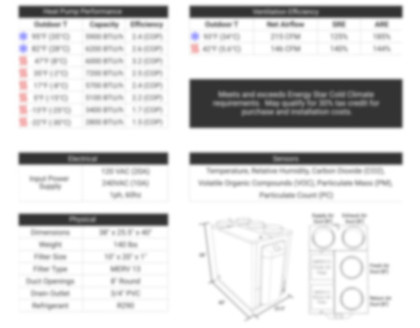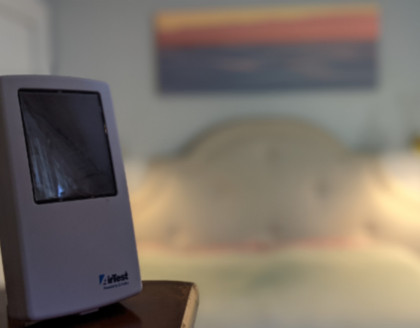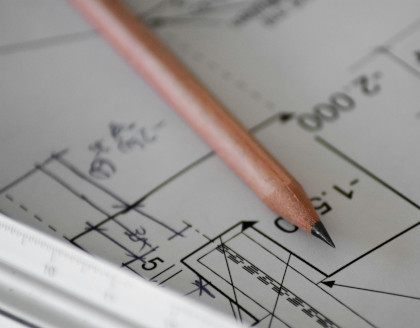Moisture is complex and has many facets, however it is an old, old problem that experienced HVACR engineers know how to address. This report discusses sources of moisture in homes, and how to manage moisture. We look around North America to learn how climate zones impact moisture management in homes. More and more regions around the world are experiencing increased temperature and humidity and the need for active comfort conditioning is expanding.
The report series begins with Part 1, Moisture Generation and Moisture Transport in Homes, that describes basic moisture generation and transport processes in homes. Part 2, Climate Moisture Variations, examines a climate’s moisture impact on a home relative to a home’s construction, ventilation (smart or not smart), and occupancy. Part 3, Methods for Managing Moisture, investigates the machines we use to manage moisture in homes. Part 4, Putting It Altogether; House Moisture Modeling, uses our free-to-use ZEROs (Zero Energy Residence Optimization software) to examine the impact of moisture on overall house energy usage and house comfort conditioning requirements. Our four part report series on handling humidity in homes can be summarized quite simply:
- For warm, humid climates; seal tight and ventilate smart
- For warm, dry climates; seal tight and ventilate smart
- For cold, northern climates; seal tight and ventilate smart
Sealing a home and incorporating a smart ventilation system is the most energy efficient way to
ensure a healthy indoor environment. Home occupants will benefit from improved health and
well-being throughout the year in all climates.
Handling Humidity Part 1: Moisture Generation & Transport in Homes
- Moisture released by occupants (respiration) and their activities (cooking, washing, etc) ranges from 1 to 5kg per day for homes with 1 to 4 occupants
- A 2000 sqft home sealed to 6ACH50 has infiltration from 0 to 400cfm as wind speed varies from 0 to 25mph
- A 2000 sqft home sealed to 0.6ACH50 has infiltration from 0 to 40cfm as wind speed varies from 0 to 25mph
- Daily water transport from infiltration and ventilation (kg/day) = 50 x V x (wo – wi)
- V = infiltration + ventilation air flow rate (cfm)
- wo = outside humidity ratio (kg-water/kg-air; summer range is 0.012 to 0.022 for warm
humid climates; winter range is less than 0.003 for cold climates with temperatures
below freezing) - wi = inside humidity ratio (kg-water/kg-air; typical summer indoor is 0.01 and typical
winter indoor is 0.005) - G = sum of indoor moisture sources (1-5kg/day, typical)
- Summer dehumidification data for Equinox House averages 5-6kg/day in line with
average weather conditions, with daily fluctuations ranging from 0 to 20 kg/day
Handling Humidity Part 2: Climate Moisture Variations
- Average outdoor relative humidity throughout most of North America is 70%, with average daily variations ranging from 60 to 80%rh
- Miami is one of the most humid US locations
- A “loosely” built (6ACH50), 2000sqft home with 2 occupants, ventilated at ASHRAE 62.2-2016 level should dehumidify 94kg/day of water in order to keep indoor relative humidity at 60%
- A “tightly” built (0.6ACH50), 2000sqft home with 2 occupants, ventilated at ASHRAE 62.2-2016 level should dehumidify 44kg/day of water in order to keep indoor relative humidity at 60%
- A “tightly” built (0.6ACH50), 2000sqft home with 2 occupants, smart ventilated home should remove 13kg/day of water in order to keep indoor relative humidity at 60%
- For Phoenix; similar loose, tight and smart ventilated homes require 25, 13, and 5 kg/day of average dehumidification during the summer monsoon season
- For Urbana Illinois; similar loose, tight and smart ventilated homes require 37, 18, and 6.5 kg/day of average dehumidification during the summer season
- The same homes in Urbana’s winter requires 21, 8, and 0 kg/day of average winter humidification in order to maintain a minimum of 30% relative humidity
- Average monthly daily and hourly psychrometric data for many locations provide readers with a systematic view of North American weather variations and the means to determine average and extreme moisture management needs throughout the year
Handling Humidity Part 3: Methods for Managing Moisture
- Primary methods for dehumidifying homes are:
- Air conditioners
- Smart, heat pump ventilators (CERV2)
- Heat Pump Water Heaters (HPWH)
- Dehumidifiers
- Primary methods for humidifying homes are:
- Vapor (steam) humidifiers
- Cool mist humidifiers
- Plants and other water sources beyond those considered in Part 1
- An example 1 ton minisplit air conditioner removes 20 to 50kg of water per day for low to high indoor humidity levels
- Air conditioners with “dry” or “dehum” mode can remove up to twice as much moisture as normal AC operation
- CERV2 smart ventilators remove significant moisture (up to 20 kg/day) during operation
- During fresh air ventilation, CERV2 removes moisture from humid outdoor air before it mixes with indoor air
- During recirculation, CERV2 continues removing moisture from indoor air
- Dehumidification amount depends on occupant and indoor air pollutant characteristics that determine fraction of time in ventilation and recirculation modes
- Indoor HPWHs remove water from indoor air during summer and winter conditions
- The amount of water removed is dependent on hot water usage and averages 0.6kg/day per occupant (1 occupant uses an average of 18gal/day of hot water)
- House dehumidifiers provide additional moisture removal capacity from homes with SHR (Sensible Heat Ratio) less than 0.5
- Energy Star dehumidifiers have EF (Energy Factor) greater than 2.0, however an adjusted EF ranges from 1.2 to 1.5 that accounts for the additional air conditioning cooling needed to remove dehumidifier exhaust heat from a house
- A high efficiency air conditioner (eg, 1 ton minisplit) has an EF of 1.5 to 2.0 for typical indoor conditioners, indicating that the air conditioner should be used for most of a home’s dehumidification needs, followed by dehumidifier operation for any remaining moisture management
- Sealed, smart ventilated homes in northern climates often do not require winter humidification
- Non-smart ventilated homes with ASHRAE 62.2-2016 ventilation often require humidification in order to maintain 30% indoor relative humidity
- Vapor (steam) humidifiers do not tend to produce air quality problems such as endotoxin generation due to the sanitizing nature of steam
- Steam humidifiers have efficiencies of 0.67kWh/kg of steam produced from electric resistance heating
- Cool mist dehumidifiers must be properly maintained in order to avoid air quality problems such as endotoxin production and distribution throughout a home
- Cool mist dehumidifiers are more energy efficient than steam humidifiers in homes with heat pump comfort heating
- Sealed smart ventilated homes with low polluting occupants can avoid the need for winter humidification
- Adding plants can beneficially increase indoor humidity in a sanitary, healthy
manner that has the same energy efficiency as cool mist humidifiers
- Adding plants can beneficially increase indoor humidity in a sanitary, healthy
Handling Humidity Part 4: Putting It Altogether; House Moisture Modeling
- Moisture management energy dominates southeast US and Gulf Coast homes comfort conditioning energy requirements
- Moisture management in the southwest US is important for part of the year (3 months)
- Moisture management in colder climates requires a combination of dehumidification during summer months and possibly humidification during winter months
- Reducing a 6ACH50 home to 0.6ACH blower door level reduces moisture management by as much as 50% in warm, humid climates
- Smart ventilation reduces moisture management by 50% in warm, humid climates in highly sealed homes in relation to an ASHRAE 62.2 ventilated home with an 80% efficient HRV
- A 0.6ACH50, smart ventilated homes in warm dry climates use 15% less energy than a 6ACH50 with 80% efficient HRV, ASHRAE 62.2 ventilated home
- 6ACH50 and 0.6ACH50 sealed homes with 80% HRV, ASHRAE 62.2 ventilation have similar energy performance
- A 0.6ACH50, smart ventilated homes in colder climates use 40% less energy than a 6ACH50 with 80% efficient HRV, ASHRAE 62.2 ventilated home




























